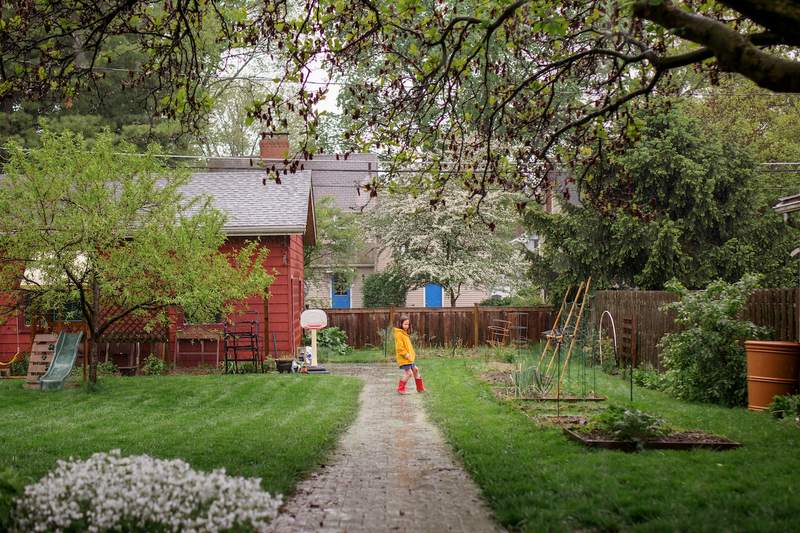Saving enough for a down payment is a significant challenge for most home buyers. Even mortgages with low down payment requirements still require a down payment of at least 3% of the purchase price. And with the median sale price topping $400,000, you need at least $12,000 and then about as much again for closing costs. If you’re struggling to save, down payment assistance programs offer grants, low-cost loans and other assistance that can help you reach your goal.
Key Takeaways:
- Saving enough for a down payment and closing costs can require tens of thousands of dollars – a difficult feat for many.
- Down payment assistance programs offer grants and low-cost loans to help with these costs.
- Many programs are specifically designed to help low- to moderate-income families and first-time homebuyers afford a home.
What Is A Down Payment Assistance Program?
Down payment assistance programs typically offer grants, deferred-payment loans and forgivable loans to help lower-income borrowers and first-time home buyers afford a down payment and closing costs. Down payment assistance usually is provided by nonprofit organizations, state and local housing finance agencies, municipalities, and mortgage lenders.
Other forms of down payment assistance include low-interest loans, lender offerings, individual development accounts and matched savings programs.
Take The First Step To Buying A Home
Before investigating down payment assistance programs, take stock of your financial situation and get your documents in order.
Think first about what you’re looking for in a home. Where do you want to live? How many bedrooms do you need? What amenities do you want? Then, think about your budget. How large a mortgage payment can you handle? Is your credit score high enough to qualify for a loan, or does it need a boost?
Next, gather financial documents, such as W-2s, bank statements, and other documents that lenders might request. This will help when you’re applying for down payment assistance and a mortgage.
What’s Your Goal?
Buy A Home
Discover mortgage options that fit your unique financial needs.

Refinance
Refinance your mortgage to have more money for what matters.
Tap Into Equity
Use your home’s equity and unlock cash to achieve your goals.
How Does Down Payment Assistance Work?
Down payment assistance provides grants or loans to eligible home buyers who put them toward their down payment or closing costs. State and local government agencies, nonprofit groups and other organizations offer DPA programs to help first-time buyers afford the sometimes daunting upfront costs required to afford a home.
Depending on your mortgage type, the minimum down payment for a single-family home is 3% to 10% of the home purchase price. That doesn’t include closing costs, which are required to fund your loan and transfer legal ownership of the property and usually total 2% to 5% of the purchase price.
The way individual down payment assistance programs work will vary – sometimes significantly. Some offer assistance that doesn’t need to be paid back, while others need to be repaid like a loan or only under certain circumstances.
Down payment assistance is available primarily to first-time home buyers and often is designed for low- and middle-income buyers. In addition to income requirements, DPA programs frequently have property requirements, and the aid depends on the buyer’s living in the home for a specific number of years. Exact requirements vary by program and the type of assistance offered.
Keep in mind that not all mortgage lenders accept all assistance programs, and some programs require you to get your primary mortgage with a specific lender.
Applying for down payment assistance is relatively straightforward. The program offering assistance usually requires you to submit an application form and financial documents similar to what you need to apply for a mortgage.
Ready To Become A Homeowner?
Get matched with a lender that can help you find the right mortgage.
Types Of Down Payment Assistance Grants And Programs
Down payment assistance comes in many forms, each with pros and cons.
Grants
Grants are the best type of assistance to get because you don’t have to pay back the money. However, many grant programs are often more challenging to qualify for and have more requirements, such as the recipient needing to live in the home as their primary residence for a minimum time after buying it.
Forgivable Loans
A forgivable loan is a second mortgage large enough to cover the down payment that you don’t have to repay if you meet specific conditions.
For example, a program might forgive the loan if you live in the home and pay the primary mortgage for five years. If you were to move out, refinance or sell the home before the five-year mark, you would have to repay the loan.
Like the other loan options, forgivable loans are usually secured through a secondary lien on the home.
Deferred Payment Loans
With a deferred payment loan, you don’t have to make payments on the loan until a later date. This most often takes the form of a no-interest second mortgage that’s repaid when you sell, refinance or pay off your home.
For example, if you used a deferred-payment loan of $10,000 to make a down payment, you would not have to make payments on it and only would repay it if you sell the home, refinance your mortgage, or pay off your primary loan in full.
In other situations, payments on the loan are delayed for a specific time. Depending on the length of deferment, lenders may include the payment in your debt-to-income ratio, which could affect how much of a loan your primary mortgage lender approves.
Low-Interest Loans
The program you’re working with may offer a low-interest second mortgage to use for a down payment or closing costs. You’d make payments on this loan in addition to your primary mortgage payment. The low interest rate would help make this arrangement affordable.
It’s important to know that your lender may include this second loan payment in your debt-to-income ratio when deciding whether to approve your mortgage application.
Mortgage Lender Programs
Individual lenders may have their own down payment assistance options. Typically, these are tied to specific loan products. They often require the buyer to contribute a certain percentage of the purchase price, with the lender contributing the remaining amount.
These programs often are available to current homeowners and first-time buyers. You’ll typically need to use the money to buy a primary residence and you’ll still need to meet traditional underwriting requirements to qualify.
Matched Savings Programs
Matched savings programs help people save up more money for a down payment. This works much like when employers match employee contributions to a retirement plan. You’ll typically open a savings account, and then organizations match your deposits to help you save money more quickly. The matching funds can be used only for a down payment or other qualifying costs.
Individual Development Accounts
Individual development accounts are matched-savings programs for lower-income people and families. They typically are funded by the federal or state governments and run by housing finance agencies.
Closing Costs Credits
Some assistance programs help with the other significant upfront expense of buying a home: closing costs. You can expect closing costs to total 2% to 5% of the purchase price. You may be able to ask your lender for credits or to waive some closing costs. You also may be able to roll yoru closing costs into the purchase price, though this often comes with a higher interest rate on your loan.
Discounted Mortgage Rates
A discounted mortgage rate is another type of assistance that can make homeownership more affordable. For example, the Federal Housing Finance Agency offers a first-time homebuyer mortgage rate discount that could reduce your interest rate by up to 1.75 percentage points. If you take out a $350,000 fixed-rate loan with a 30-year term at a 6% interest rate, your monthly loan payment would be $2,098. Lowering your interest rate to 4.25%, your monthly payment would be $1,722 – saving you $376 per month.
Property Tax Credits
Some state and local governments also offer property tax credits to first-time home buyers. For example, a mortgage credit certificate can get you a federal income tax credit of up to $2,000 per year on the interest you pay on the home. To be eligible, you must be a first-time home buyer purchasing your primary residence and meet specific income limits.
Mortgage Credit Certificates
A mortgage credit certificate is a tax benefit offered to some homeowners, usually those who are low income, helping to make homeownership more affordable. It isn’t a down payment assistance program, but it can significantly reduce the cost of owning a home.
The program allows homeowners to receive a tax credit for a portion of the interest they pay on their mortgage. Unlike the mortgage interest tax deduction, you are not required to itemize , and the tax incentive is a tax credit rather than a deduction, meaning it reduces your tax owed directly rather than reducing your taxable income.
The credit is a dollar-for-dollar credit, meaning you get a credit equal to the amount you paid in interest up to a limit. This program is administered by state and local housing authorities, so check with your local government to see if you’re eligible.
Take The First Step To Buying A Home
Find a lender that will work with your unique financial situation.
Down Payment Assistance Program Requirements
Most down payment assistance programs have eligibility requirements that you must meet to receive help. These are some of the most common program requirements.
Be A First-Time Home Buyer
Many programs are intended to help first-time home buyers. Somewhat confusingly, you may qualify as a first-time homebuyer even if you have previously owned a home.
Typical requirements to count as a first-time buyer are:
- You haven’t owned any interest in residential property in the three years before your closing date.
- You’ll be occupying the property as your primary residence.
- You’ll be moving in within 60 days of your closing date.
Plan To Live In The Home As Your Primary Residence
Most down payment assistance programs are not intended for people buying a vacation property, second home or rental. You must agree to live in the home as your primary residence for a minimum time.
Meet Income Limits
Many down payment assistance programs are targeted at low- to moderate-income households. Your income typically must be less than a percentage of the federal poverty level or the area median income.
Buy In An Approved Location
Programs offered by cities, local or state housing finance agencies may require you to live in their jurisdiction to get assistance. The same applies to special-purpose credit programs supported by participating lenders or mortgage investors.
Contribute Your Own Money
Some programs require home buyers to contribute some of their own money toward the down payment and closing costs to get assistance. Depending on the terms of the assistance, this could be a flat amount or a percentage of the purchase price.
Work With An Approved Mortgage Lender
Many DPA programs require borrowers to work with an approved mortgage lender. If that’s the case, you may be limited in your ability to shop around for the best deal on a home loan. As an alternative, you may choose to search for a program that lenders are likely to accept.
Take A Home Buyer Education Course
Borrowers often are required to take a first-time home buyers class that covers how to get ready for homeownership, the steps in the home buying process, and responsibilities such as maintenance and property taxes. The program sometimes requires you to take a specific course, or you can choose one certified by the U.S. Department of Housing and Urban Development.
Spend Less Than The Maximum Purchase Price
In some cases, assistance may come with a maximum purchase price. This often is a percentage of the median home price in your buying area.
Finding Down Payment Assistance Programs And Grants
Down payment assistance can come from many sources. Here’s where to start:
- U.S. Department of Housing and Urban Development. HUD is best known to many as the home of the Federal Housing Administration, which administers FHA loans. It also has a directory of local home buying programs, including down payment assistance.
- Housing finance agencies. States and some larger cities have housing finance agencies. These can be great resources for state-supported programs.
- Municipalities. Regardless of whether they do so through a housing finance agency or otherwise, municipalities often have housing support programs in one form or another.
- Housing-focused nonprofits. Nonprofits focused on housing also are good places to look for grants and other forms of down payment assistance.
- Down payment assistance programs for specific groups. There are programs for people who work in particular occupations, such as the Teacher Next Door program. There also are programs for other school employees, nurses and health care professionals, law enforcement and other first responders, government employees, active-duty military, and veterans.
Down Payment Assistance Resources By State
Here’s a rundown of state-run agencies offering down payment assistance.
Down Payment Assistance Programs By State
How To Apply For Down Payment Assistance
Once you’ve found a down payment program you’re eligible for, you must apply. Each program will have a unique application process, but you’ll likely have to provide similar information with each application.
The documentation required may be similar to what you would use to apply for your mortgage application, including:
- Pay stubs
- W-2 forms
- 1099 forms
- Income tax returns
- Bank statements
Additionally, some programs may do a credit check, particularly if there’s a loan involved.
What Types Of Loans Allow Down Payment Assistance Grants Or Programs?
Generally speaking, major mortgage investors such as Fannie Mae, Freddie Mac, the FHA, Veterans Affairs, etc., allow down payment assistance, whether through grants or loans. The thing to watch for is whether the lender has to be approved or the down payment assistance has to be the first lien. If that’s the case, many mortgage lenders won’t accept those programs. Speak with your mortgage lender to learn more.
Pros And Cons Of Down Payment Assistance Programs
It’s important to consider the pros and cons of down payment assistance. Some of the benefits of down payment assistance programs include:
- You can buy a home sooner.
- You can save money on the upfront costs of buying a home.
- You could receive grants or a forgivable loan you don’t need to repay.
- You could get a loan with a zero percent interest rate.
- Some loans don’t have to be repaid until you’ve paid off or sold your home.
- You can avoid paying for PMI.
Down payment assistance programs also come with some downsides, such as:
- You could pay more interest over the life of your loan.
- You may need to be a first-time home buyer or meet other eligibility requirements.
- You may need to repay the money if you don’t meet specific terms.
- If the assistance comes as a second mortgage, you may have to repay the loan if you sell or refinance your home.
- Some assistance programs limit the purchase price of the home you can buy.
FAQ
Down payment assistance is a massive help for people looking to buy a home. These are some of people’s most common questions about how it works.
The Bottom Line
Down payment assistance programs offer grants, low-cost loans, and other help to people trying to buy a home. Typically, these programs aim to assist first-time buyers and people with low-to-moderate income. If you’re considering buying a home but find saving for a down payment difficult, look for down payment assistance programs in your area. You may find that homeownership is closer than you think.
T.J. Porter contributed to the reporting of this article.

Kevin Graham
Kevin Graham is a Senior Writer for Rocket Companies. He specializes in economics, mortgage qualification and personal finance topics. As someone with cerebral palsy spastic quadriplegia that requires the use of a wheelchair, he also takes on articles around modifying your home for physical challenges and smart home tech. Kevin has a bachelor's degree in journalism from Oakland University.












